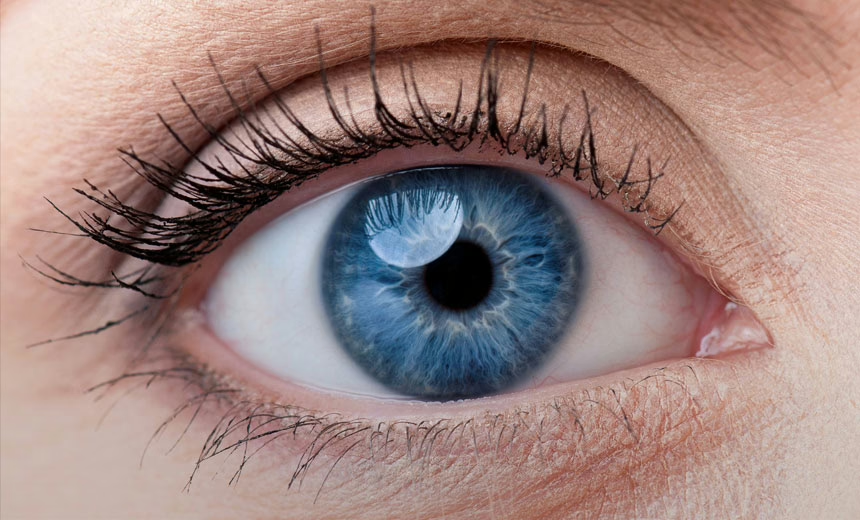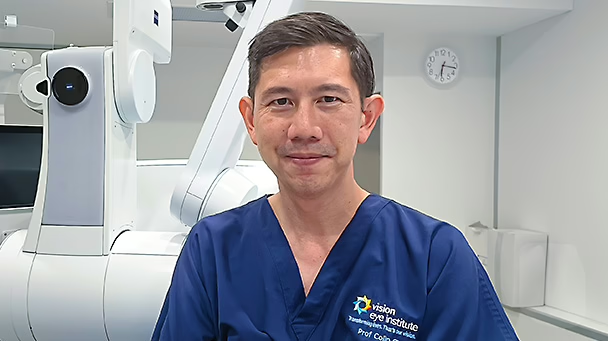Subscribe to eyeMatters periodic news
"*" indicates required fields
Is laser eye surgery safe?

The other day, while I was having dinner with my wife and our two boys, my younger son (who is in year 10) asked me about laser eye surgery. As any dad would when their teenager shows an interest in their activities, I puffed out my chest a little and answered his question.
To my surprise, he then asked another question, and another, and then another – each one more specific than the last.
‘What’s LASIK?’
‘How is it different from SMILE or PRK?’
‘What actually happens in laser eye surgery?’
‘How do you correct myopia or short-sightedness?’
‘How do you correct long-sightedness?’
‘What is long-sightedness?’
‘And what is astigmatism?’
Sensing that this was more than just my son taking a casual interest in his dad’s work, I said, ‘Why are you asking me all these questions?’.
He replied, ‘Oh, we’re learning about laser eye surgery in biology.’
Amazed, I reflected on the fact that laser eye surgery has now become so accepted in our society that it is part of the school curriculum.
Laser eye surgery: the next generation
When laser eye surgery became available in the 1990s, having it was considered quite unusual – even a bit controversial or radical.
However, I’m now seeing the children of the people who had laser eye surgery in the ’90s, and these patients are likely to have a more comfortable experience than their parents.
That’s because the technology we use in 2023 is far superior to the laser eye surgery of the 1990s and 2000s. For example, when I had laser eye surgery in 2004, my surgeon used a frequency of 50 kilohertz (kHz).
Modern lasers, on the other hand, are at least 10 times faster, operating at between 500 and 750 kHz. So, laser treatment time is now much faster than it used to be, making laser eye surgery more accurate and comfortable for patients.
When I see young adults wanting to have laser eye surgery because their parents did, it indicates that laser eye surgery has become more widely accepted.
But does this acceptance by society mean that laser eye surgery is safe?
“Is laser eye surgery safe?”
As an experienced surgeon, I am reluctant to use the word ‘safe’ in connection with any surgery, including laser eye surgery. That’s because many people take the word ‘safe’ to mean ‘zero risk.’ No surgery can be considered completely safe because no surgery is entirely without risk.
However, what we can say about laser eye surgery is that it is one of the safest and most effective of the elective surgical procedures offered today. Different forms of laser eye surgery have been performed for over 30 years and the procedure is very well-established.
Over the years, LASIK, ASLA and SMILE® have been studied extensively and there is a wealth of clinical evidence showing that each vision correction procedure is low-risk and effective for people who qualify. The best way to illustrate the safety and efficacy of laser eye surgery is to look at some of the data.
Millions of people have had LASIK
Because LASIK is the most commonly performed laser eye surgery procedure to date, there have been thousands of studies analysing its safety and how well it can correct refractive errors (e.g. short-sightedness, long-sightedness or astigmatism), which is referred to as its ‘efficacy’.
A 2016 review article took 97 of the best-designed LASIK studies, which included 67,893 LASIK-treated eyes, and analysed their results together to understand the worldwide outcomes. They found that:
- More than 90% of patients had perfect results (i.e. 20/20 vision or better, which we call 6/6 vision here in Australia), and nearly 100% had vision that meets the Australian legal driving requirements (6/12 vision).1
- Less than 1% of patients lost clarity of vision of two or more lines on the eye chart (known as corrected distance visual acuity)1
- Up to 99% of patients are extremely happy with their outcome.1
SMILE, ASLA and LASIK: Different individuals suit different procedures
Certain types of laser eye surgery may be considered less safe and effective for certain individuals. For example, LASIK is not suitable for all eyes – different laser eye procedures work best on different refractive errors or corneal features. ASLA (also known as PRK) is suited to people who have thinner corneas because those patients are at increased risk of complications if they have LASIK. ASLA has actually been around longer than LASIK, but it is used for fewer patients because it has a longer recovery time. The good news is that studies have shown that patients who have ASLA can expect safety and outcomes comparable to LASIK.2
SMILE was introduced over 10 years ago for people with higher degrees of short-sightedness. Many patients prefer SMILE because it is keyhole surgery. One million eyes have been corrected using this type of laser eye surgery, and there is a growing body of clinical evidence to show SMILE is a better option than LASIK for higher degrees of short-sightedness or patients with drier eyes.3,4
The risks of side-effects and complications are low
Most issues that can arise after laser eye surgery resolve in the short term.
However, it’s important to have a good understanding of the potential risks and long-term effects before going ahead with the surgery. These include:
- Over- or under-correction of your refractive error: This means that your vision is not perfect after the procedure. In almost all cases, this can be corrected by an ‘enhancement’ procedure (or by wearing glasses or contact lenses).
- Loss of visual sharpness: A small number of people may experience this while their vision is stabilising after surgery, but it normally resolves within 6 months.
- Dry eye: Laser eye surgery disturbs the eye’s tear film, which can disrupt tear production and lead to dry eye. It’s normal to experience this for a few weeks or months after surgery, but in rare cases this can persist. LASIK is most likely to cause this side-effect, so people who suffer from dry eye may have ASLA or SMILE recommended instead.
- Flap problems: The flap of corneal tissue that is lifted and replaced during LASIK can move out of place after surgery if the patient rubs their eyes, swims or plays sports too soon. You can help avoid this by following your post-operative recovery instructions.
Serious complications are rare
Most people’s biggest fear associated with laser eye surgery is going blind. But you can be reassured by the fact that blindness as a result of laser eye surgery has never occurred in Australia. It is possible to have a serious reduction in vision or severe persistent dry eye after laser, but that risk can be lessened by having an experienced surgeon who utilises rigorous clinic safety protocols and advanced technology.
Be sure that laser eye surgery is safe for you
Laser eye surgery is low-risk and effective for the people who qualify for each procedure. If your eyes are not suited to a procedure, the results may be less effective and you may be at greater risk of post-operative complications or long-term side effects.
An experienced surgeon will undertake a comprehensive evaluation to understand everything about your eyes – from the thickness and shape of your cornea to your general eye health – before advising whether you are eligible for laser eye surgery and which procedure best suits your eyes. If you are told you are not a suitable candidate for laser eye surgery, it is for your own safety.
SMILE® is a registered trademark of Carl Zeiss Meditec.
References
- Sandoval HP, Donnenfeld ED, Kohnen T et al. Modern laser in situ keratomileusis outcomes. J Cataract Refract Surg. 2016;42(8):1224-1234.
- O’Bart D. Excimer laser surface ablation: a review of recent literature. Clin Exp Optom. 2014;97:12–17.
- Yao L, Zhang M, Wang D, et al. Small Incision Lenticule Extraction (SMILE) and Laser in Situ Keratomileusis (LASIK) used to treat myopia and myopic astigmatism: a systematic review and meta-analysis of randomized clinical trials. Semin Ophthalmol. 2022;1-11.
- Zhang Y, Shen Q, Jia Y et al. Clinical Outcomes of SMILE and FS-LASIK Used to Treat Myopia: A Meta-analysis. J Refract Surg. 2016;32(4):256–265.
The information on this page is general in nature. All medical and surgical procedures have potential benefits and risks. Consult your ophthalmologist for specific medical advice.
Date last reviewed: 2025-05-20 | Date for next review: 2027-05-20

